|
|
Post by pieter on Jul 30, 2014 15:56:14 GMT -7
|
|
|
|
Post by pieter on Jul 30, 2014 15:58:22 GMT -7
 Survey: Most Poles say Warsaw Rising was 'necessary'30.07.2014 09:54 A new survey indicates that 62 percent of Poles believe the doomed 1944 Warsaw Rising against the Nazi Germans was necessary, just days before the 70th anniversary of the insurgency. Survey: Most Poles say Warsaw Rising was 'necessary'30.07.2014 09:54 A new survey indicates that 62 percent of Poles believe the doomed 1944 Warsaw Rising against the Nazi Germans was necessary, just days before the 70th anniversary of the insurgency.  President of Poland Komorowski and President of Germany Joachim Gauck with Polish veterans at the opening of the Warsaw Rising exhibition in Berlin, 29.07.2014 Photo: PAP/Paweł Supernak President of Poland Komorowski and President of Germany Joachim Gauck with Polish veterans at the opening of the Warsaw Rising exhibition in Berlin, 29.07.2014 Photo: PAP/Paweł SupernakThe poll by Poland's Public Opinion Research Centre ( CBOS) shows that support for the rising is 10 percent higher than twenty years ago. Meanwhile, some 22 percent of those surveyed said the rising was not necessary, while 17 percent confessed they had no opinion on whether the insurgency was justified. Simultaneously, 32 percent of respondents claimed that the rising is only important for the older generation, while 48 percent said it is important for all Poles. The insurgency, which was launched on 1 August 1944, was led by the underground Home Army ( AK), which was loyal to the Polish government-in-exile in London. The guerrillas were equipped to fight for no longer than a week unaided, but pledges had been given by the Red Army - which was sweeping across Nazi-occupied Poland - that it would help liberate the city. Stalin delayed help and frustrated UK efforts to land planes transporting aid to the insurgents. Ultimately, the rising lasted for two months before the AK leadership capitulated. About 30,000 insurgents perished, and about 200,000 civilians. What remained of central Warsaw was then dynamited on Hitler's orders. Despite the underground's hopes to control its own destiny by taking part in the liberation of Poland, the rising had its detractors from the outset. 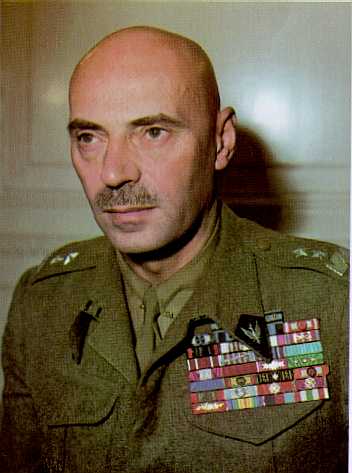 General Wladyslaw Anders considered the Warsaw Rising a crime, believing it had no chance of success. I remember a discussion on the other Polish culture Forum between Bonobo (Pawian) and Tufta, about the Warsaw Rising, and Bonobo considered it to be a crime too, due to the -in his eyes- useless loss and sacrifice of civillian Warsaw lives. Tufta supported the Armia Krajowa (AK) and stood behind the Warsaw Uprising General Wladyslaw Anders considered the Warsaw Rising a crime, believing it had no chance of success. I remember a discussion on the other Polish culture Forum between Bonobo (Pawian) and Tufta, about the Warsaw Rising, and Bonobo considered it to be a crime too, due to the -in his eyes- useless loss and sacrifice of civillian Warsaw lives. Tufta supported the Armia Krajowa (AK) and stood behind the Warsaw UprisingIn 1944, several of Poland's key military leaders fighting in the West, including General Wladyslaw Anders, had advised against the launch of the insurgency, believing it had no chance of success. “ Like all of my colleagues in the 2nd Corps, I was always of the opinion... that the Rising had no sense, that it was even a crime,” Anders wrote. However, the late former courier of the Home Army Jan Nowak-Jezioranski argued that after 5 years of occupation, the young insurgents' desire to fight for their independence was irrepressible. Following the war, Poland's Soviet-backed communist regime attempted to discredit the Home Army and the government-in-exile, and it was not until 2004, on the 60th anniversary, that a large-scale museum of the rising was opened in Warsaw. President Bronislaw Komorowski opened an exhibition in Berlin on Tuesday about the insurgency, together with his German counterpart Joachim Gauck.  Jan Nowak-Jezioranski, late former courier of the Home Army Jan Nowak-Jezioranski, late former courier of the Home Army German President Joachim Gauck together with his Polish counterpart Bronislaw Komorowski German President Joachim Gauck together with his Polish counterpart Bronislaw Komorowski |
|
|
|
Post by pieter on Jul 30, 2014 16:25:24 GMT -7
 Warsaw Rising ‘symbol of heroism’ in US Senate resolution30.07.2014 11:53The US Senate’s Committee on Foreign Relations has passed a resolution which states that the Warsaw Rising, whose 70th anniversary is marked this week, “serves as a symbol of heroism and the power of the human spirit”. Warsaw Rising ‘symbol of heroism’ in US Senate resolution30.07.2014 11:53The US Senate’s Committee on Foreign Relations has passed a resolution which states that the Warsaw Rising, whose 70th anniversary is marked this week, “serves as a symbol of heroism and the power of the human spirit”. The document was put forward by Democrat Senator for Maryland, Barbara Mikulski, who is of Polish descent, as well as Republican Senator Jim Risch and Democrat Ben Cardin. The resolution speaks of the Nazi destruction of Warsaw following “ 63 days [of] suffering, extreme hardship, retribution, and personal sacrifice” in which “ approximately 250,000 Poles were killed, wounded, or went missing”. The resolution continues with the statement that “ the actions of the Polish resistance inspire people throughout the world who fight for freedom and democracy”. Senator Mikulski was pleased that the resolution was passed without any amendments, saying that “ my Polish heritage gave me an identity and values thanks to which I am a senator who believes in freedom, in people, and the need for truth”. (jb) Source: IAR  Democrat Senator for Maryland, Barbara Mikulski Democrat Senator for Maryland, Barbara Mikulski Republican Senator Jim Risch Republican Senator Jim Risch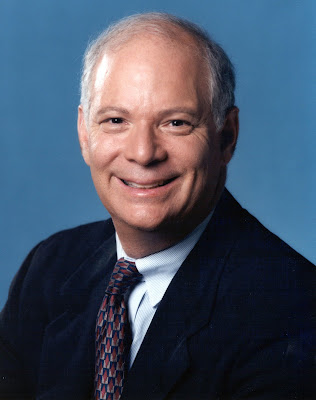 Democrat Ben Cardin Democrat Ben Cardin |
|
|
|
Post by Jaga on Jul 30, 2014 23:20:00 GMT -7
Pieter,
it is good to see Jim Risch, a senator from Idaho doing some work on Warsaw Uprising.
By the way, I would rather vote that after we know what happened, Warsaw Uprising was not necessary.
|
|
|
|
Post by Nictoshek on Jul 31, 2014 3:05:02 GMT -7
|
|
|
|
Post by pieter on Jul 31, 2014 8:05:47 GMT -7
Nicetoe, In August 2006 Im visited the Warsaw Uprising Museum. This morning and afternoon I visited the Airborne Warmuseum dedicated to Market Garden in Oosterbeek, near Arnhem. I filmed the Museum from the inside and the outside. A Sherman tank and three British peaces of artillery. And British, Polish and German (Waffen-SS and Wehrmacht Panzer) uniforms. A war day for me.  The Warsaw Uprising Museum was very impressive. They even had a complete allied bomber inside. One of the Lancasters that flew over Warsaw during the Rising to bring supplies. In the Warsaw Museum I bougth this book of Norman Davies (in English) and I read it: 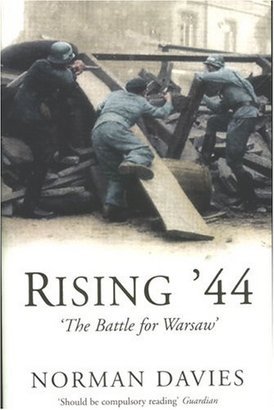 Davies is an excellent British historian, and honest for an Englishman. He is both Pro-Polish and objective. A good historian. He writes of the betrayal of the Poles by the Sovjets, Brits and Americans. (The Tehran, Yalta and Potsdam Conferences) And in the same time he writes very interesting and historical correct about the Germans, Poles, Sovjets and the allied attempt to help the Warsaw Uprising, despite the attempt of the Sovjets to sabbotage that. The British, American and also South-African Airforce planes only could reach Poland via the very far distance connection from Italy to Poland. That was very far for that time. They weren't allowed to land on Sovjet airfields to fly on Poland from Russia or Ukraine. With the knowledge of today I agree with Jaga, tactical and strategic the Warsaw Rising wasn't succesful. In the beginning they brought some losses to the Nazi's, but on the long term the Poles lost more soldiers, officers and especially civilians. They had no chance against the German heavy panzers, artillery, and battle hardened Wehrmacht and Waffen-SS troops. The most terrible thing was the fact that German SS divisions made up of heavy criminals were unleashed on the city. And in the same time Ukrainian, Russian and Baltic allies of the Nazi's. These Ukrainians and Russians were very vicious. Cheers, Pieter |
|
|
|
Post by pieter on Jul 31, 2014 8:21:55 GMT -7
36th Waffen Grenadier Division of the SS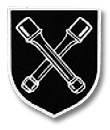 Semi-official insignia of the SS-Sturmbrigade Dirlewanger Semi-official insignia of the SS-Sturmbrigade DirlewangerThe 36th Waffen Grenadier Division of the SS, also known as the SS-Sturmbrigade Dirlewanger ( 1944), or simply the Dirlewanger Brigade, was a military unit of the Waffen-SS during World War II, and was led by convicted child rapist Oskar Dirlewanger. Originally formed for anti-partisan duties against the Polish resistance; the unit eventually saw action in Slovakia, Hungary, and against the Soviet Red Army near the end of the war. During its operations it engaged in the rape, pillaging and mass murder of civilians.  Men of SS-Sonderbataillon Dirlewanger execute suspected partisans, November 1942.The unit Men of SS-Sonderbataillon Dirlewanger execute suspected partisans, November 1942.The unit participated in some of World War II's most notorious campaigns of terror in the east. During the organization's time in Russia, Dirlewanger burned women and children alive and let the starved packs of dogs feed on them. He was known to hold large formations with the sole purpose of injecting Jews with strychnine. Dirlewanger's unit took part in the occupation of Belarus, where it carved out a reputation within the Waffen-SS as an atrocious unit. Numerous Heer and SS commanders attempted to remove Dirlewanger from the SS and disband the unit, although he had patrons within the Nazi apparatus who intervened on his behalf. His unit was most notably credited with the destruction of Warsaw, and the massacre of ~100,000 of the city's population during the Warsaw Uprising; and participating in the brutal suppression of the Slovak National Uprising in 1944. Dirlewanger's unit generated fear throughout the Waffen SS and it earned notoriety as the most criminal and heinous SS unit in Hitler's war machine.  Oskar DirlewangerOccupation of Poland Oskar DirlewangerOccupation of PolandOn 1 August 1940, the Dirlewanger Brigade was assigned to guard duties in the region of Lublin (site of a Nazi-established " Jew reservation" established under the Nisko Plan [ en.wikipedia.org/wiki/Nisko_Plan ]) in the General Government territory of occupied Poland. According to journalist and author, Matthew Cooper, " wherever the Dirlewanger unit operated, corruption and rape formed an every-day part of life and indiscriminate slaughter, beatings and looting were rife". The General Government's Höherer SS- und Polizeiführer ( HSSPF) Friedrich Wilhelm Krüger was disturbed by the unlawful behaviour of the Dirlewanger. His complaints resulted in its transfer to Belarus in February 1942.  Höherer SS- und Polizeiführer (HSSPF)Friedrich Wilhelm Krüger was disturbed by the unlawful behaviour of the DirlewangerReturn to Poland Höherer SS- und Polizeiführer (HSSPF)Friedrich Wilhelm Krüger was disturbed by the unlawful behaviour of the DirlewangerReturn to Poland Men of the SS-Sturmbrigade Dirlewanger enter Warsaw Men of the SS-Sturmbrigade Dirlewanger enter WarsawWhen the Armia Krajowa began the Warsaw Uprising on 1 August 1944, Dirlewanger was sent into action as part of the Kampfgruppe formation led by SS-Gruppenführer Heinz Reinefarth; once again serving alongside Kaminski's militia (now named Waffen-Sturm-Brigade RONA).[13] Acting on orders that came directly from Reichfuhrer-SS Heinrich Himmler, Kaminsky's and Dirlewanger's henchmen were given a free hand to rape, loot, torture and butcher. Over the following days, the troops indiscriminately massacred Polish combatants along with civilian men, women and children in the Wola District of Warsaw.  SS-Gruppenführer Heinz Reinefarth SS-Gruppenführer Heinz Reinefarth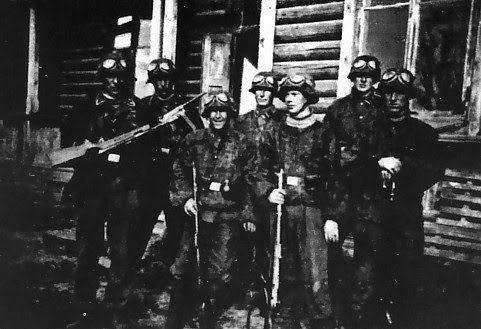 Men of the Sonderkommando Dirlewanger in WarsawThe Dirlewanger's fight against the insurgents in Warsaw saw it suffer extremely high losses Men of the Sonderkommando Dirlewanger in WarsawThe Dirlewanger's fight against the insurgents in Warsaw saw it suffer extremely high losses. Although the regiment arrived in the city numbering only 865 soldiers and 16 officers it soon received reinforcements of 2,500 men, including 1,900 German convicts from the SS military camp at Danzig-Matzkau. During the course of the two-month urban warfare Dirlewanger lost 2,733 men. Thus, total casualties numbered 315% of the unit's initial strength. While some of the regiment's actions were criticized by von dem Bach (who after the war described them as " a herd of pigs") and the sector commander, Generalmajor Günter Rohr; Dirlewanger was recommended by Reinefarth for the Knight's Cross of the Iron Cross and promotion to SS-Oberführer der Reserve.  SS-Obergruppenführer (General) Erich von dem Bach-Zelewski (1 March 1899 – 8 March 1972) lead the suppression of the Warsaw uprising. SS-Obergruppenführer (General) Erich von dem Bach-Zelewski (1 March 1899 – 8 March 1972) lead the suppression of the Warsaw uprising.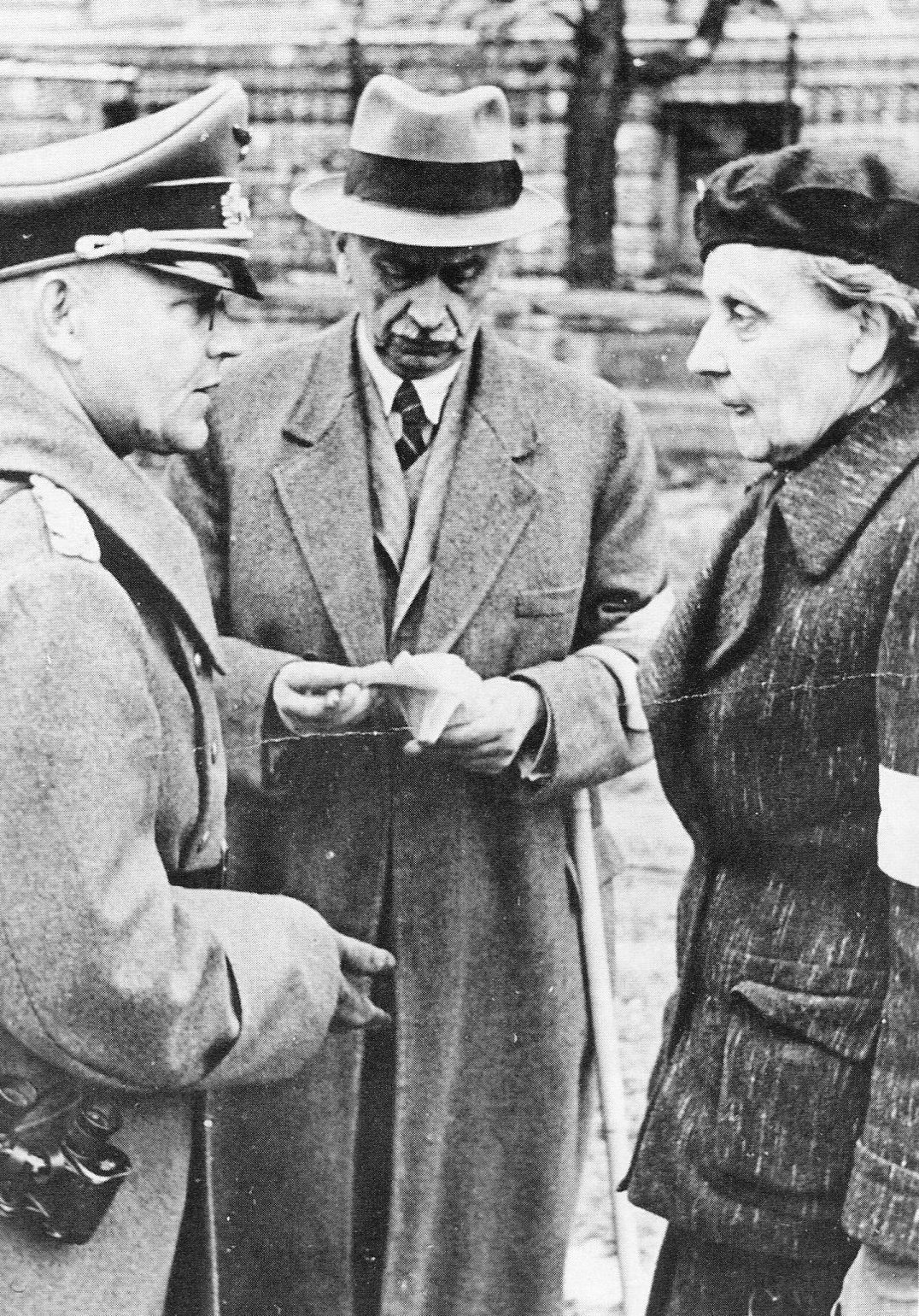 Major General Günter Rohr at the Warsaw Uprising - Capitulation Talks with representatives of Armia Krajowa Major General Günter Rohr at the Warsaw Uprising - Capitulation Talks with representatives of Armia Krajowa Still from film footage taken by the Polish Underground showing the bodies of women and children murdered by troops of the SS-Sturmbrigade Dirlewanger in Warsaw, August 1944 Still from film footage taken by the Polish Underground showing the bodies of women and children murdered by troops of the SS-Sturmbrigade Dirlewanger in Warsaw, August 1944Thanks to Mathias Schenck from Belgium, many previously unknown episodes of the carnage have been revealed. The brutal murder of 500 small children was committed by Dirlewanger during the 1944 Wola massacre. Schenck testified, " After the door of the building was blown off we saw a daycare-full of small children, around 500; all with small hands in the air. Even Dirlewanger's own people called him a butcher; he ordered to kill them all. The shots were fired, but he requested his men to save the ammo and finish them off by rifle-butts and bayonets. Blood and brain matter flowed in streams down the stairs".
Schenck (a sapper serving in the Wehrmacht) testified seeing a Dirlewanger man raping a girl while wielding a knife, and then cutting her wide open along the entire length of her torso after ejaculation. Up to 40,000 civilians were murdered in Wola in less than two weeks of August, including all hospital patients and staff."  Dirlewanger and his men Dirlewanger and his menBy 3 October 1944, the Poles had surrendered and the depleted regiment spent the next month guarding the line along the Vistula. During this time, the regiment was upgraded to brigade status, and named SS-Sonderbrigade Dirlewanger ( SS Special Brigade Dirlewanger). In early October, it was decided to upgrade the Dirlewanger again, this time to a Waffen-SS combat brigade. Accordingly, it was redesignated as the 2. SS-Sturmbrigade Dirlewanger in December 1944, and soon reached its complement of 4,000 men.  Members of the SS-Sonderregiment Dirlewanger in a window of a townhouse at 9 Focha Street in Warsaw, August 1944. In the glass reflection one can identify details of the tenement on the opposite side of the streetSlovakia and Hungary Members of the SS-Sonderregiment Dirlewanger in a window of a townhouse at 9 Focha Street in Warsaw, August 1944. In the glass reflection one can identify details of the tenement on the opposite side of the streetSlovakia and Hungary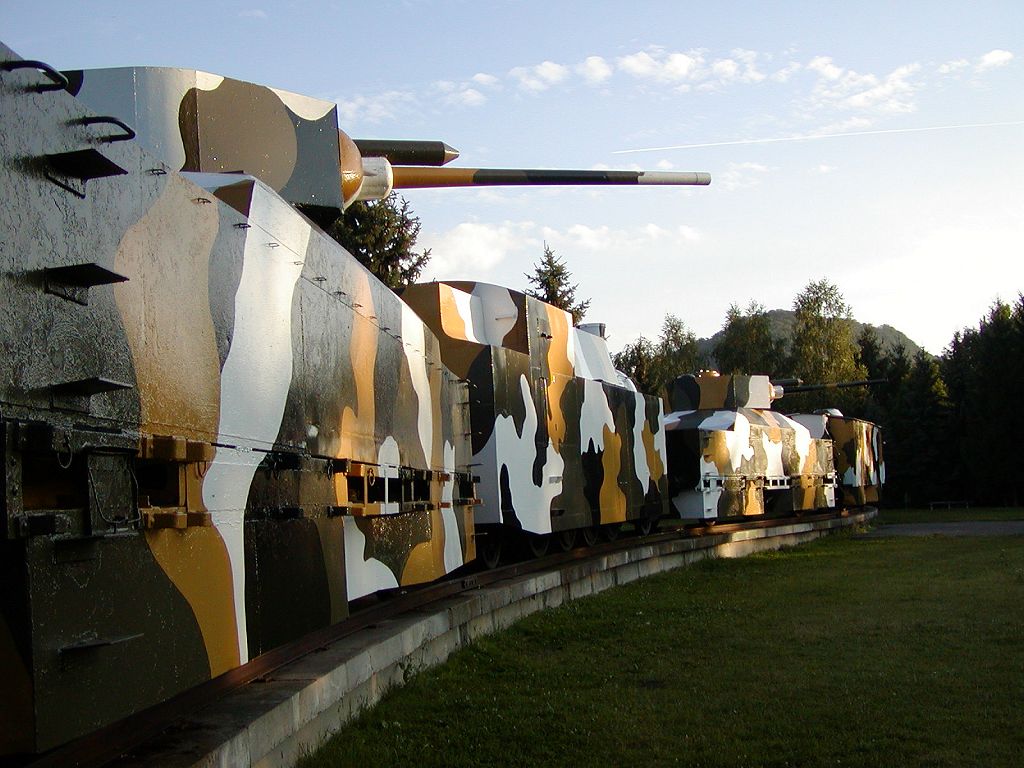 Armored train Hurban preserved in Zvolen. Armored train Hurban preserved in Zvolen. ( en.wikipedia.org/wiki/Armored_train_Hurban ) When the Slovak National Uprising began in late August 1944, the newly formed brigade was committed to action. The conduct of the brigade played a large part in putting down the rebellion, and by 30 October the uprising was put down. With the outcome of the war no longer in doubt, large numbers of communist and socialist political prisoners began applying to join the Dirlewanger in the hope of defecting to the Soviets. SS-Brigadeführer Fritz Schmedes, disgraced former commander of the 4th SS Polizei Division, was assigned to the Dirlewanger by Himmler as punishment for refusing to carry out orders. With his extensive combat experience, Schmedes became the unofficial advisor to Dirlewanger on front line combat. 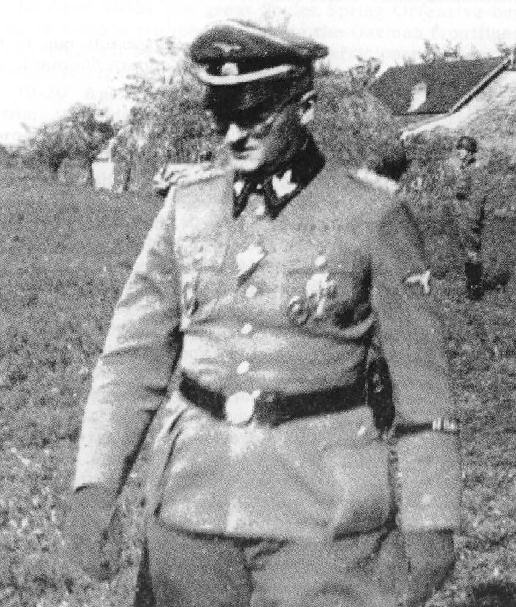 Fritz Schmedes (7 Oktober 1894 - 7 Februari 1952) SS-Brigadeführer und Generalmajor der Waffen-SS und Polizei Fritz Schmedes (7 Oktober 1894 - 7 Februari 1952) SS-Brigadeführer und Generalmajor der Waffen-SS und Polizei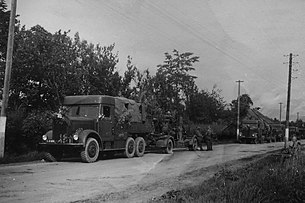 Convoy of Slovak insurgent army vehicles near Kelemeš (today part of Prešov) Convoy of Slovak insurgent army vehicles near Kelemeš (today part of Prešov)In December, the brigade was sent to the front in Hungary. While several newly formed battalions made up of communist and socialist volunteers fell apart, several other battalions fought well. During a month's fighting, the brigade suffered heavy casualties and was pulled back to Slovakia to refit and reorganize.  Memorial of the Slovak National Uprising in Banská Bystrica. Memorial of the Slovak National Uprising in Banská Bystrica.
|
|
|
|
Post by Nictoshek on Jul 31, 2014 8:43:46 GMT -7
I had an uncle who survived the 44 uprising. Settled later in Sosnowiec near Katowice then eventually emigrated to Chicago.
|
|
|
|
Post by pieter on Jul 31, 2014 9:17:17 GMT -7
I had an uncle who survived the 44 uprising. Settled later in Sosnowiec near Katowice then eventually emigrated to Chicago. In which part of Warsaw did he live. The Warsaw Uprising was terrible for the civilians and for the resistance fighters. The brutality of the German, Austrian, Ukrainian, Russian and Baltic nazi's was terrible. My grandparents unfortunately lived in the area ( Mokotow) which was occupied and dominated by the Germans. They lived near a Wehrmacht base, an SS officers settlement and a Gestapo prison, Mokotow prison. Mokotów prisonMy grandparents lived in the street next to Mokotow prison. And my mother and her sister were not allowed by my grandparents to look at the prison at the back of their house. They could see the watchtowers and the prison complex from their back windows. Due to the mass executions of fellow Poles it was not a pleasent place to live. Before the war it was a nice street and neighborhood. It was umbarable for my Polish family and their Polish neighbors that so nearby Patriotic fellow Poles were humiliated, tortured and murdered (executed). My mother, aunt and grandparents often heared the shots of the rifles and pistols, when Polish inmates were executed on the courtyard. Especially young Polish men were targets and arrested during łapankas ( razzia's) at the streets of Warsaw. There was a systematic massmurder of young Polish men, because they were considered as a possible threat. They were seen as a danger for the German occupation forces, because they were seen as the fundament of the Polish resistance. But ofocurse also ordinary Polish citizens were rounded up and murdered. Women, children, elder people and men. My Polish grandfather was a typical Polish gentleman. He was a teacher at a Warsaw girls lyceum and an inspector of a Warsaw School district before the war. Thus he was considered part of the Polish intelligentsia and a target for the Gestapo and the SD (Sicherheitsdienst). During the war he was constantly wary that he might be arrested, imprisoned and killed. All those years (1939-1944) he had always a suitcase standing next to the dinnertable in their apartment. The housemaster had connections in the Polish underground (resistance movement) and the Polish Underground had it's informers inside the Gestapo headquarters. Several times when the Gestapo would come, my grandfather was warned by the housemaster and he had his escape route via the foof of their apartment building. Can you imagine living in constant fear for 5 years? Ofcourse tens of thousands of his colleages (teachers, professors, academics, journalists, intellectuals -Polish intelligentsia-) were murdered by the Gestapo, SD, and SS forces. Next to that my Polish grandmother was used as human shield by the German Waffen-SS in Mokotow. During the Warsaw Uprising she hald to walk in front of them, while bullets of Polish snipers of the Armia Krajowa flew left and right around her head and body. In Dutch we have the saying " The bullets were flying aorund your ears." She survived that, and later during the deliberate destruction of Warsaw and the selections of the Warsaw population for German concentrationcamps and forced labour, my grandmother and father survived Ukrainian SS thugs that passed them and tried to rob my grandfather. My very smart Grandmohter prevented that, by saying that they belongings were already confiscated by a German SS officer (that was a lie ofcourse, but it prevented the robing). Later in that same occupied Warsaw, just after the uprising, my grandparents were separated. My grandmother was sent to Mauthausen with other Polish women. The same kind of train they used for the transport of the Jews to their fate in the Nazi concentrationcamps. My grandmother survived Mauthausen, my grandfather survived in Poland, and managed to keep himself out of the hands of the Nazi's. He traveled around until he was united with my grandmother and his two daughters at the end of the War in Poznan (1945). My mother and sister were staying in a Nunnery, where Polish children had summer camps. During the Warsaw Uprising that Summer Camp became very long. The girls spend in the camp for months. Their parents stayed in the very dangerous Warsaw during the Uprising. Later, because their parents dissapeared, the girls were sent to familymembers outside Warsaw in a smaller town in the province. That was arranged by their parents. The girls must have felt abandoned by their parents. But they didn't knew that their parents (my babcia and dziadek) had probably saved their lives. Staying in the Nunnery saved their lives. My mother remembered that after a while very poor and dirty looking people (fellow Poles probably) came from a nearby (concentration) camp. These children were traumatized and different. There was one little boy who wanted to play with my mother, but that was not allowed by the nuns. He was crazy due to the war, and shouted 'call to arms' all the time, and he kissed the Mary image my mother had hung on her neck. They were very religious back then. The nuns considered it indecent behavior, while it was clearly an innocent and devout message. He payed his respect to the mother of Christ. My mother became very ill there (because due to the war their were no doctors) and very long time she was kept in solitary isolation in a room. Her sister was not allowed to see her, nor the other girls of her group of Warsaw girls. That made her very loonly (being alone for weeks, months). She had appendicitis, was extremely ill and week and in the stage of dying. Finally there was a doctor found who was somewhere else in Poland. With great risk my mother was operated by an assistant, while the docter instructed him via the phone. Other familymembers died during the war due to the Warsaw Rising and Katyn. Several familymembers and friends were Polish officers and they were murdered in the SovjetUnion in 1940 or 1941.  Mokotow Prison today Mokotow Prison todayAfter the Invasion of Poland (1939), the prison became part of the German District of Warsaw, in the borough, reserved for the German administration of the General Government and the Nazi occupational army. The prison was one of several prisons of the Gestapo in Warsaw. It housed Polish politicians, freedom fighters, resistance workers and ordinary people caught in łapankas on the streets of Warsaw. The site became infamous due to constant torture of the inmates. It was known as one of the places of no return ( Nacht und Nebel), from which the only way out was to the execution site, or to a German concentration camp. It was also a place of detention of innocent hostages, taken by Germans as punishment for actions by the Home Army. Later they were killed in mass executions announced publicly.  Mokotow Prison today Mokotow Prison todayDuring the first hours of the Warsaw Uprising of 1944, the prison was attacked from the outside by the WSOP platoon of the GRANAT group of the Home Army. The partisans successfully broke into the prison and liberated approximately 300 inmates. However, they did not manage to capture the entire prison and were soon counter-attacked by the SS forces stationed nearby and forced to retreat. As a reprisal, the SS and Wehrmacht murdered approximately 500 inmates. Until the end of the uprising both the prison and the area of Rakowiecka street were held by the Germans, despite numerous attacks by the Home Army. After the Uprising the German District was spared the fate of the rest of Warsaw and survived the war in a relatively good condition. After the war Mokotow prison became a notorious place of detention and torture of the Polish Stalinist secret police Urząd Bezpieczeństwa or UB. 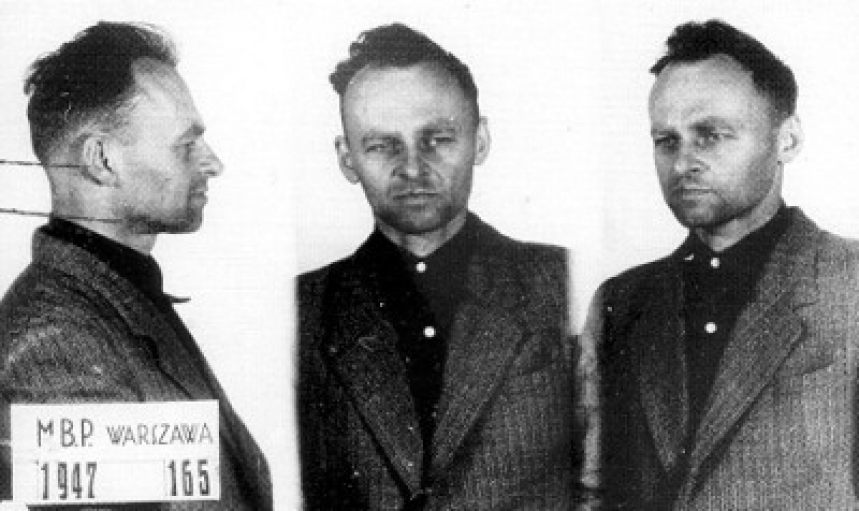 Pilecki in Mokotow prison after his arrest by the Communists in 1947.en.wikipedia.org/wiki/Piotr_%C5%9Amieta%C5%84ski Pilecki in Mokotow prison after his arrest by the Communists in 1947.en.wikipedia.org/wiki/Piotr_%C5%9Amieta%C5%84ski |
|
|
|
Post by pieter on Jul 31, 2014 10:02:16 GMT -7
S.S. Sturmbrigade R.O.N.A..svg/209px-SS-Sturmbrigade_%E2%80%9ERONA%E2%80%9D_(alternative_Version).svg.png)  Russian Nazi troops with POA (ROA) shoulder patches visible, 1944.S.S. Sturmbrigade R.O.N.A. Russian Nazi troops with POA (ROA) shoulder patches visible, 1944.S.S. Sturmbrigade R.O.N.A. (also known as the Kaminski Brigade) was an anti-partisan formation composed of people from the so-called Lokot Autonomy territory in the Nazi Germany-occupied areas of Russia during World War II. First appearing in late 1941 as auxiliary police, the unit initially numbered 200 personnel. By mid-1943, its numbers had increased to 10-12 thousand and were equipped with captured Soviet tanks and artillery. The unit's leader Bronislav Kaminski named it Russian National Liberation Army (Russkaya Osvoboditelnaya Narodnaya Armiya, RONA).  Nazi auxiliary police in Ukraine made out of ethnic Ukrainian volunteers Nazi auxiliary police in Ukraine made out of ethnic Ukrainian volunteersAfter Operation Citadel, personnel of the R.O.N.A. retreated to Belarus and the Lepel area of Vitebsk, where they were involved in anti-partisan activities, committing numerous atrocities against the civilian population. In March 1944, the unit was briefly renamed to Volksheer-Brigade Kaminski ( Peoples- Brigade Kaminski), before it was absorbed into the Waffen-SS in June 1944. With its transfer to the Waffen-SS, the brigade was renamed to Waffen-Sturm-Brigade RONA, and Kaminski was given the rank of Waffen-Brigadeführer der SS (the only man with such a rank). After Operation Bagration, the R.O.N.A retreated further west, and by the end of July 1944, the remains of the Kaminski unit ( 3-4 thousand---some sources estimate 6-7 thousand) were assembled at the SS training camp Neuhammer. On the Kaminski unit base, SS leaders planned to create a SS Division - 29.Waffen-Grenadier-Division der SS ( russische Nr.1). However, the Warsaw Uprising began on the same day as Himmler's signing of an order for the establishment of the division. The division formation was never implemented and part of the “ RONA”- Brigade was forwarded to Warsaw, where the unit was again involved in committing numerous war-crimes. On August 18, 1944, Bronislav Kaminski was killed. According to various sources, either an SS court found him guilty or he was simply executed outright by the German Gestapo. 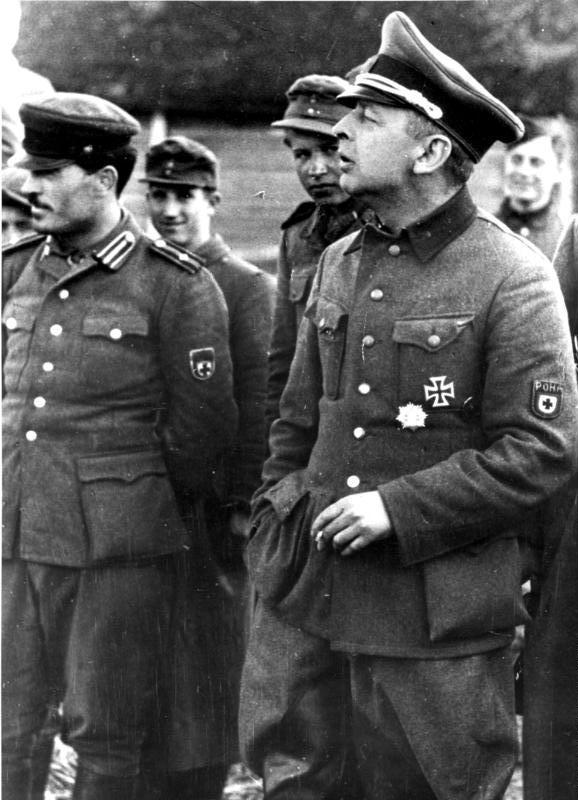 Bronislav Kaminski and personnel of the Volksheer-Brigade Kaminski” operation”Frühlingsfest”, Belarus, May 1944In Warsaw Bronislav Kaminski and personnel of the Volksheer-Brigade Kaminski” operation”Frühlingsfest”, Belarus, May 1944In WarsawBy August 27, deciding the brigade was too undisciplined and unreliable, the German commanders removed it from Warsaw. Having suffered heavy losses, the remaining members of the brigade were forwarded farther West, where remnants of the brigade were used against Slovak partisans. After the end of October 1944, the brigade was disbanded and the remaining personnel absorbed into General Andrey Vlasov's Russian Liberation Army. The Warsaw Uprising, which started on August 1, 1944, changed Himmler’s plans and, on August 4, 1944, a combat ready regiment of the brigade was ordered to assist the efforts in crushing the uprising. SS-Gruppenführer Heinz Reinfarth was placed in charge of Kampfgruppe Reinfarth, a pacification unit which consisted of the Kaminski along with the Dirlewanger, several other Ordnungspolizei and SS rear area units. Himmler personally requested Kaminski's assistance, and the latter obliged by gathering a task force of 1,700 unmarried men and sending them (some sources state they had four T-34 tanks, one SU-76 and a few artillery pieces) to Warsaw as the mixed regiment under field command of Kaminski's brigade chief-of-staff, SS-Sturmbannführer Ivan Frolov. Frolov in 1945 stated that regiment had up to 1600 men and 7 artillery pieces and 4 mortars. 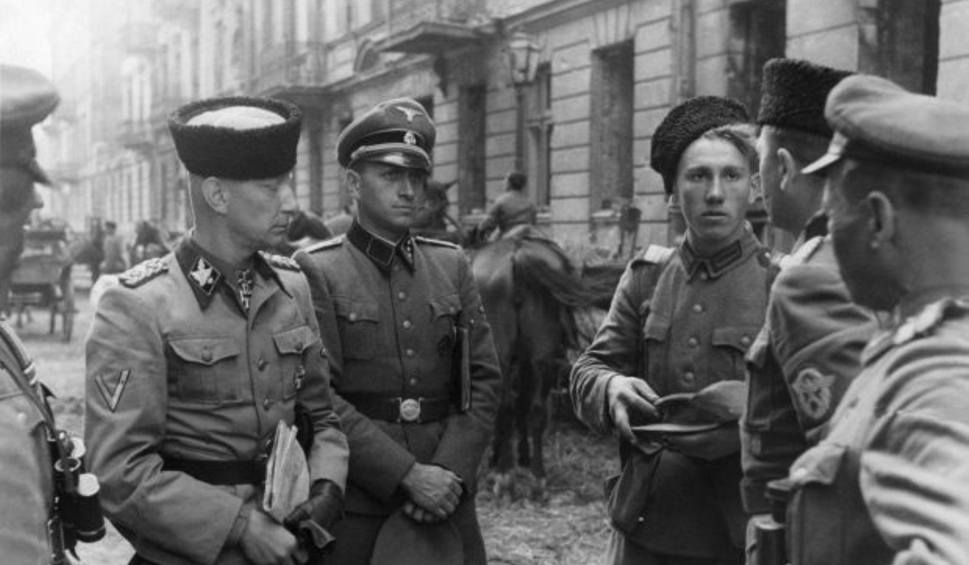 German SS officers and Russian SS officers in Warsaw during the Warsaw UprisingKaminski volunteers German SS officers and Russian SS officers in Warsaw during the Warsaw UprisingKaminski volunteers were first given the task of clearing the Ochota district defended by only 300 poorly armed Poles. Their attack was planned for the morning of August 5, but when the time came, Kaminski's men could not be found. After some searching, they were found looting abandoned houses in the rear. The attack finally got underway shortly before noon and it went poorly, with the brigade advancing only 275 meters before nightfall. The men had neither training for nor prior experience in urban combat. For many it was the first time they had even seen a major city and they fought poorly while suffering high casualties. At the same time, thousands of Polish civilians were killed by the RONA SS men during the events known as the Ochota massacre; many of the victims were also raped. In the middle of the month, the Kaminski was moved south to the Wola sector, but it fared no better in combat there than in Ochota. In one incident, a sub-unit had stopped their advance to loot a captured building on the front line and was consequently cut off and destroyed by the Poles.  Victims of the Ochota massacre Victims of the Ochota massacreBy August 27, the German commanders decided the brigade was too undisciplined and unreliable. In almost a month of fighting, the brigade had still not achieved any of its major objectives. The German commander in Warsaw, SS-Obergruppenführer Erich von dem Bach-Zelewski, stated in post war trials that the unit " had no military combat value whatsoever, with both officers and soldiers having not even a hint of tactical understanding". " I saw Kaminski's men removing entire cartloads of stolen jewellery, gold watches, and precious stones. The capture of a liquor supply was more important for the brigade than the seizure of a position commanding the same street. Each assault was instantly stopped, because after taking the objective over, units dispersed into loose, plundering hordes." Kaminski himself was involved in the looting in Warsaw, claiming he was collecting for his " Russian Liberation Fund". Major General Günter Rohr, commander of Warsaw's southern sector, demanded that the brigade be removed from his command. Bach-Zelewski agreed, as the troublesome unit was slowing his efforts to suppress the uprising. As soon as replacement units were available, the Kaminski was pulled out of the line after losing about 500 men in combat during the fighting in Warsaw.  General Bronislav Kaminski - leader of Russian National Liberation Army (Russkaya Osvoboditelnaya Narodnaya Armiya, RONA).The RONA volunteers General Bronislav Kaminski - leader of Russian National Liberation Army (Russkaya Osvoboditelnaya Narodnaya Armiya, RONA).The RONA volunteers, now decimated and infamous even among the SS, were then assigned to the Kampinos Forest to help seal off Warsaw. During their stay in the forest, the unit's artillery battery and one of its infantry battalions were suddenly attacked by 80 Polish partisans led by Lieutenant Colonel " Dolina" ( Adolf Pilch) while stationed at the emptied village of Truskaw. Nearly 100 Russian and German SS-men died in the midnight assault. The remnants of the battalion, which was mostly drunk at the time of the attack, fled in disarray, abandoning their weapons as they fled. In Truskaw, the 1st Regiment lost its entire artillery and much of the stolen merchandise from the city. According to some Polish sources, 250 RONA troops were killed during the night of September 2–3 in the raid on Truskaw, and 100 more in the raid on the village of Marianów the next night. A captured diary of the Kaminski brigade soldier, Ivan Vashenko, (killed at Truskaw) was published in Poland in 1947.  Kaminski with a German police unit Kaminski with a German police unitAt the time of the Warsaw actions, Kaminski was called to Łódź to attend a leadership conference. He never reached it. Officially, Polish partisans were blamed for an alleged ambush in which Kaminski and a few RONA officials (including brigade chief-of-staff Waffen-Obersturmbannführer Ilya Shavykin) were killed. Some sources say he was placed in front of a military tribunal and then shot by a firing squad, others that he was shot when he was captured by the Gestapo. The death of Kaminski and the unreliability of his troops as a combat unit brought the plans to expand the Kaminski Brigade to a division to an end. After Kaminski's death, his unit was placed under command of the SS-Brigadeführer and Generalmajor der Polizei Christoph Diehm.  SS-Brigadeführer and Generalmajor der Polizei Christoph Diehm SS-Brigadeführer and Generalmajor der Polizei Christoph Diehm
|
|
|
|
Post by pieter on Jul 31, 2014 10:41:43 GMT -7
Warsaw Rising, the numbers It is estimated there were between 12 - 20,000 AK soldiers (up to another 75,000 people involved in auxiliary roles) committed to the fight against a well-armed and trained German Army of 20,000 battle-hardened troops made up of SS and Wehrmacht units. Although some units of the AL were involved in the action, the lack of tanks, armoured cars and heavy calibre weapons meant their role made little impact upon the outcome. Bor-Komorowski’s hope that the AK could take and hold Warsaw for the return of the Government in Exile was politically ill conceived. The Soviets had no intention of recognising the AK and its leaders. The Warsaw rising and the annihilation of the resistance by the Germans sped up the ‘ removal’ of a political obstacle for post war settlement. After 63 days of savage fighting the city was rubble and the reprisals brutal.  Gen. Antoni Chruściel ([anˈtɔɲi ˈxruɕt͡ɕel] ( listen) nom de guerre Monter; 1895–1960) was a Polish military officer and a general of the Polish Army. He is best known as the de facto commander of all the armed forces of the Warsaw Uprising of 1944, as well as Home Army's chief of staff. Gen. Antoni Chruściel ([anˈtɔɲi ˈxruɕt͡ɕel] ( listen) nom de guerre Monter; 1895–1960) was a Polish military officer and a general of the Polish Army. He is best known as the de facto commander of all the armed forces of the Warsaw Uprising of 1944, as well as Home Army's chief of staff. General Count Tadeusz Komorowski (Korczak Coat of Arms) (1 June 1895 - 24 August 1966), better known by the name Bór-Komorowski (after one of his wartime code-names: Bór - "The Forest") was a Polish military leader. He was appointed commander in chief a day before the capitulation of the Warsaw Uprising and following World War II, Prime Minister of the Polish government-in-exile in London. General Count Tadeusz Komorowski (Korczak Coat of Arms) (1 June 1895 - 24 August 1966), better known by the name Bór-Komorowski (after one of his wartime code-names: Bór - "The Forest") was a Polish military leader. He was appointed commander in chief a day before the capitulation of the Warsaw Uprising and following World War II, Prime Minister of the Polish government-in-exile in London. Demolition of a large Warsaw building during the uprsing Demolition of a large Warsaw building during the uprsing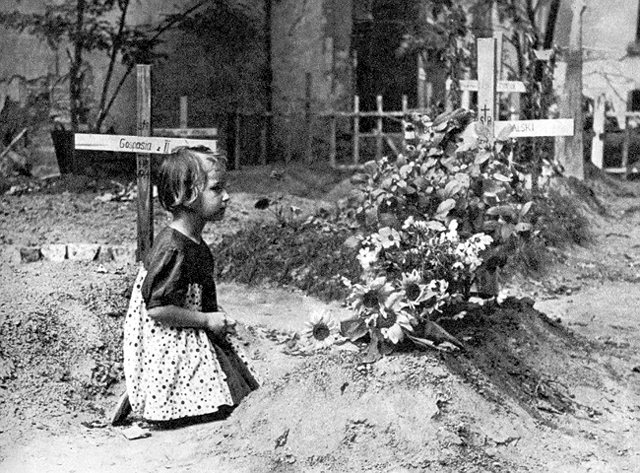 Girl praying at a makeshift grave next to a bloc of flats in one of many makeshift cementaries during the Rising.The RONA brigade led by Kaminski specialized in anti-partisan action was made up of the scum and deserters of the Soviet army supported Oskar Dirlanger’s Brigade and other units in vile retribution Girl praying at a makeshift grave next to a bloc of flats in one of many makeshift cementaries during the Rising.The RONA brigade led by Kaminski specialized in anti-partisan action was made up of the scum and deserters of the Soviet army supported Oskar Dirlanger’s Brigade and other units in vile retribution. Mass shootings in reprisal together with the burning of hospitals with staff and patients was typical of the ‘ clean-up’ operations. Women and children were tied too tanks as protection against ambushes. Approximately 550,000 inhabitants were sent to a concentration camp at Pruszkow ( the boy from my mums nunnery probably came from Pruszkow) and another 150,000 used as slave labour while over 245,000 died. 93% of the city was uninhabitable and featureless of landmarks. Wehrmacht sappers systematically demolished the city. The Warsaw Rising gave Stalin the opportunity to remove a well-organized army and paved the way for the imposition of a post-war puppet government. Those who did survive would be dealt with at the infamous trials and tribunals where long-term imprisonment or execution was guaranteed.  Pruszkow Transit Camp women and children Pruszkow Transit Camp women and children
|
|
|
|
Post by Nictoshek on Jul 31, 2014 11:11:46 GMT -7
Hell of a story pieter. My own grandfather was imprisoned by the Gestapo during the occupation, but was released when the family paid the ransom.
|
|
|
|
Post by pieter on Jul 31, 2014 11:20:56 GMT -7
Dear Nicetoe,
Thank god for him and your family. Our grandfathers were lucky. So many young and older Polish men died in Warsaw back then. The Warsaw Uprising was hell on earth. After the jews now the Poles as slaves were ready for mass murder, because they were rebellious and they were seen as inferior beings. So you could kill innocent women, children, elderly people, ill people, clergy men (priests), educated people for the reasonb they were educated (the Polish intelligentsia).
What was the reason that the Gestapo arrested your grandfather? Was he just so unfortunate that he was captured at one of these notorious łapankas (razzia's), was he involved in the resistance. Was it because he was a young man? Just curious? It is good that your family, your grandmother and your other familyembers got their husbant, son, father or uncle, cousin/nephew back.
Cheers,
Pieter
|
|
|
|
Post by pieter on Jul 31, 2014 11:30:15 GMT -7
 Górczewska Street memorial at the location of railway embankment where up to 10,000 people were shot and then burnt between 5–8 August 1944en.wikipedia.org/wiki/Wola_massacreWarsaw Uprising massacres Górczewska Street memorial at the location of railway embankment where up to 10,000 people were shot and then burnt between 5–8 August 1944en.wikipedia.org/wiki/Wola_massacreWarsaw Uprising massacres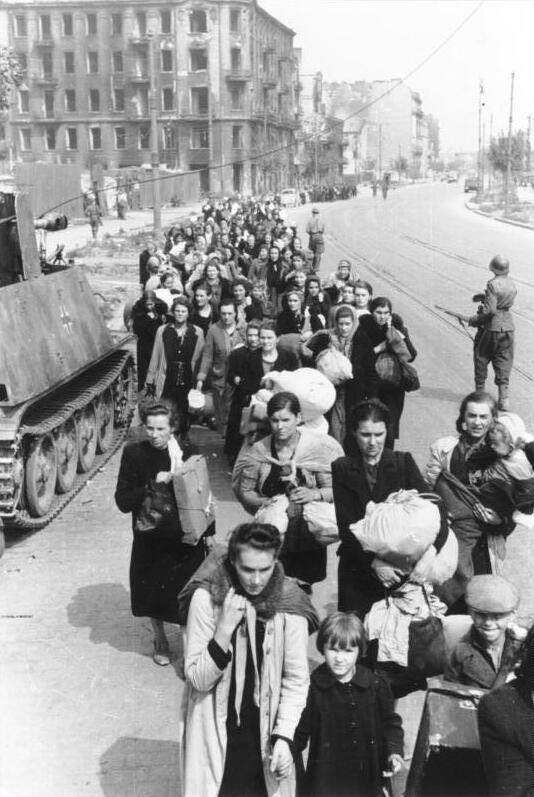 A column of Polish women with children being led by German troops through Wolska Street in early August 1944. Men were routinely executedPolish A column of Polish women with children being led by German troops through Wolska Street in early August 1944. Men were routinely executedPolish and German historians estimate that during the 1944 Warsaw Uprising up to 200,000 civilians perished. Already in 1944 SS-Gruppenführer Heinz Reinefarth claimed 250,000 dead, which is now considered exaggerated by him for propaganda purposes. Historian Hans von Krannhals claims that at least 10 percent of the victims were killed in mass executions committed by regular German troops, including by Hermann Göring Divisions such as the 1st Infantry Division across Praga, the 2nd Motorized Division in Czerniaków, the 25th Panzergrenadier Division in Marymont as well as the 19th Panzer Division in Praga and Żoliborz districts. The atrocities were closely connected with the planned destruction of Warsaw by Hitler who threatened to "turn it into a lake". The most severe of them took place in the Wola district, where at the beginning of August 1944 tens of thousands of civilians (men, women, and children) were methodically rounded-up and executed by Einsatzkommandos of Sicherheitspolizei operating within the Reinefarth's group of forces under the command of Erich von dem Bach-Zalewski. Executions in the Wola district, referred to as the Wola massacre, also included the killings of both the patients and staff of local hospitals. The victims' bodies were collected and burned under pain of death by the members of the Verbrennungskommando made up of captured Polish men. The carnage was so bad that even the German high command were stunned.  Senior officers from the Russian National Liberation Army (RONA) hold a briefing during the Warsaw Uprising Senior officers from the Russian National Liberation Army (RONA) hold a briefing during the Warsaw Uprising A memorial plate for the house where scores of people were killed during the Ochota massacre, with grenades in a basement and twenty people shot in the back yard on August 4, 1944 A memorial plate for the house where scores of people were killed during the Ochota massacre, with grenades in a basement and twenty people shot in the back yard on August 4, 1944Massacres took place in the areas of Śródmieście (City Centre), Old Town, Marymont, and Ochota districts. In Ochota, civilian killings, rapes, and looting were conducted by the members of Russian S.S. Sturmbrigade R.O.N.A. and the Dirlewanger. Until the end of September 1944, Polish resistance fighters were not considered by the Germans as combatants and were summarily executed when captured. After the fall of the Old Town, during the beginning of September, the remaining 7,000 seriously wounded hospital patients were executed or burned alive often with the medical staff who cared for them. Similar atrocities took place later across Czerniaków. Captured insurgents were hanged or otherwise executed after the fall of Powiśle and Mokotów districts as well.  |
|
|
|
Post by pieter on Jul 31, 2014 11:42:57 GMT -7
|
|